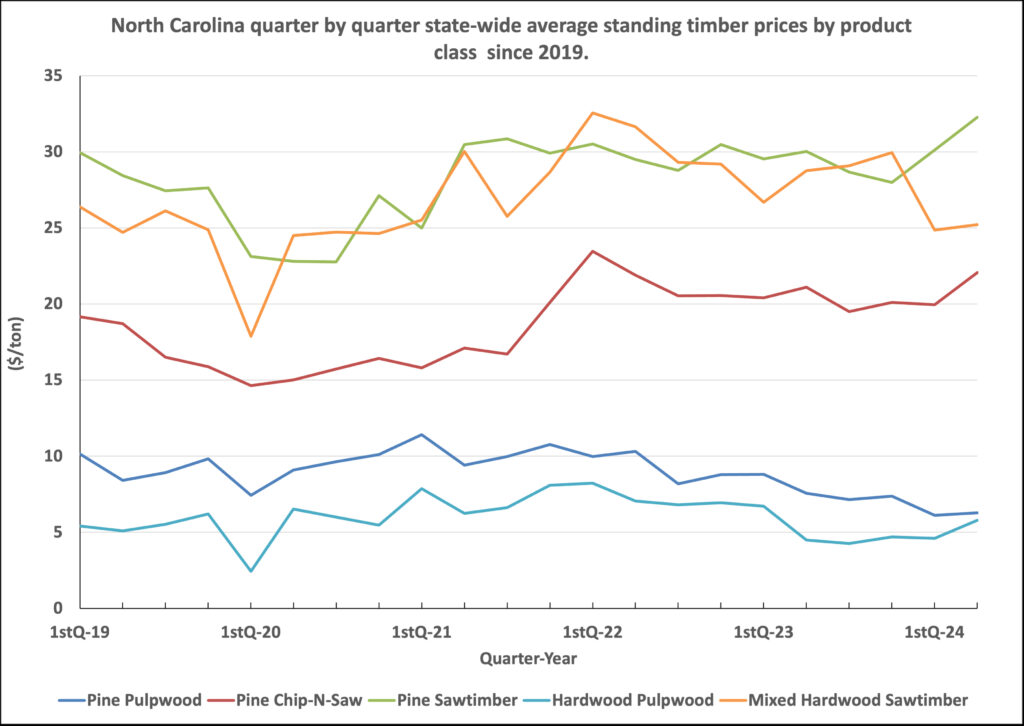North Carolina’s State-wide Average Timber Prices See Little Improvement Since 2019
go.ncsu.edu/readext?1015544
en Español / em Português
El inglés es el idioma de control de esta página. En la medida en que haya algún conflicto entre la traducción al inglés y la traducción, el inglés prevalece.
Al hacer clic en el enlace de traducción se activa un servicio de traducción gratuito para convertir la página al español. Al igual que con cualquier traducción por Internet, la conversión no es sensible al contexto y puede que no traduzca el texto en su significado original. NC State Extension no garantiza la exactitud del texto traducido. Por favor, tenga en cuenta que algunas aplicaciones y/o servicios pueden no funcionar como se espera cuando se traducen.
Português
Inglês é o idioma de controle desta página. Na medida que haja algum conflito entre o texto original em Inglês e a tradução, o Inglês prevalece.
Ao clicar no link de tradução, um serviço gratuito de tradução será ativado para converter a página para o Português. Como em qualquer tradução pela internet, a conversão não é sensivel ao contexto e pode não ocorrer a tradução para o significado orginal. O serviço de Extensão da Carolina do Norte (NC State Extension) não garante a exatidão do texto traduzido. Por favor, observe que algumas funções ou serviços podem não funcionar como esperado após a tradução.
English
English is the controlling language of this page. To the extent there is any conflict between the English text and the translation, English controls.
Clicking on the translation link activates a free translation service to convert the page to Spanish. As with any Internet translation, the conversion is not context-sensitive and may not translate the text to its original meaning. NC State Extension does not guarantee the accuracy of the translated text. Please note that some applications and/or services may not function as expected when translated.
Collapse ▲
North Carolina quarter-by-quarter state-wide average standing timber prices by product class since 2019.
Over the past five years, North Carolina’s state-wide standing timber prices have fluctuated from quarter to quarter with some quarters performing better than others. Comparing the second quarter of 2024 standing timber prices to standing timber prices from five years ago we see pine sawtimber and pine chip-n-saw prices have risen slightly, 8% and 15% respectively, and hardwood sawtimber prices have dropped by 4%. The opposite happened with pulpwood prices where pine pulpwood prices dropped 38% and hardwood pulpwood prices increased by 7% from five years ago.
Compared to 1 year ago prices for pine sawtimber, pine chip-n-saw, and hardwood pulpwood are up 7%, 5%, and 29%, respectively. Hardwood sawtimber and pine pulpwood prices have not fared as well on a state-wide basis with hardwood sawtimber and pine pulpwood declining 12% and 17% respectively.
In a review of quarter-to-quarter state-wide average price data for the second quarter of 2024, North Carolina’s standing timber prices are up compared to the first quarter of 2024 in all five product classes, with prices rising 1% to 26%. When comparing Eastern and Western North Carolina, Eastern North Carolina’s second quarter 2024 average standing timber prices were up from the first quarter 2024 prices for all product classes but pine chip-n-saw and pine pulpwood, which declined by 2% and 8% respectively. In Eastern North Carolina pine and oak sawtimber prices increased by 2% and 4%, and hardwood pulpwood prices increased by 7%. Standing timber prices in Western North Carolina fared much better than Eastern North Carolina with prices increasing significantly in all product classes but hardwood sawtimber, which saw price decline by 1%. Prices increased by 13%, 29%, and 23% for pine sawtimber, pine chip-n-saw, and pine pulpwood, respectively. Hardwood pulpwood price saw the most significant increase at 63%.
For more information on the second quarter 2024 average standing timber prices in North Carolina, please visit the Forestry Price Data page. Remember, timber prices may vary greatly depending on many factors including location, species, products, access, and distance to the mill. Timber prices presented in price reports may not reflect the standing timber values for a particular stand of trees or within a specific region of the state. It is recommended that you seek professional assistance in accessing the value of your standing timber.


